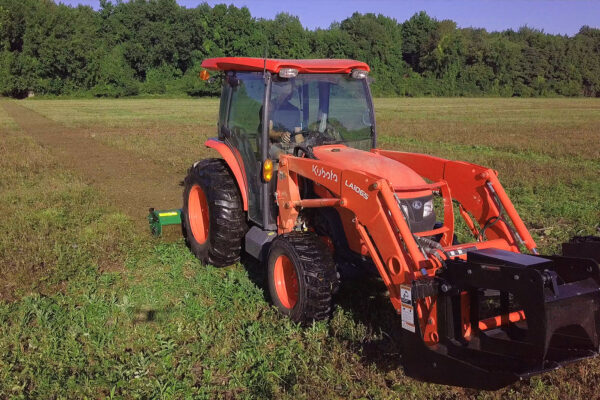Rim Guard Liquid Ballast Valve Stem Information
Here are some of the key points and a few pictures to illustrate what Rim Guard (and any liquid ballast) requires when it comes to a tire’s valve stems.
Air / Liquid Valve Stems
Generally, there are two basic types of valve steps. Those designed for air only, and those that are designed for air and liquid—sometimes referred to as Tractor or Wet valve stems.
- Air / Liquid stems are available for both tubed and tubeless applications.
- Air / Liquid stems are designed specifically to be used with liquid ballast and are an industry standard for any liquid ballast. They usually have a 2-piece construction which allows the upper half (the valve core housing), to be removed allowing access to the larger bore (the lower half), for faster and easier fluid installation and evacuation.


- The base portion of this valve is referred to in the industry as a TR218 style valve and is offered for both tubed or tubeless applications.
- The upper portion, the Valve Core Housing that threads into the base, is referred to as a CH3 (Core Housing).
- There are some other metal valve stem variants that dealers have used depending on the application (valve stem hole position, rim diameter, etc.).
- Air / Liquid stems are an industry standard for any liquid ballast.
Rubber Air-Only valve stems
As the name implies, the air only stems are intended to be used for applications when air or nitrogen is the only thing that will be used to fill the tire. These valve stems are NOT designed nor intended to be used with any liquid ballast.
- The problem with using this type of valve stem with liquid ballast is due to the way they are manufactured. The metal components are typically glued into the rubber stem. If the adhesives remain dry, “air only”, they are fine. If you introduce any type of liquid ballast, now the adhesives are soaking in the liquid and will soften. Eventually the adhesives become so weak that the rubber valve stem will de-laminate and separate from the metal components allowing the contents in the tire to escape.
- Even filling a tire with water, a safe and benign liquid, would have the same effects on the adhesives. The adhesives will soften and eventually fail. It could take 2 month or 2 years, but they WILL fail eventually.
- People have stated that Rim Guard dissolved their rubber stems. This is simply not true. If Rim Guard dissolved their rubber stems, then their tires would also dissolve and that is just not happening…. We have been filling tires for almost 25 years and have millions of Rim Guard filled tires in the field all across North America. If it was an issue, we would have heard about it long ago.


